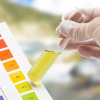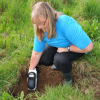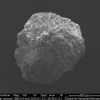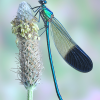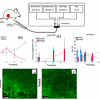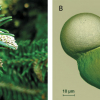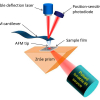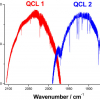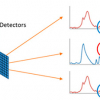C.K. Pezzei,a,§ M. Watschinger,a,§ V.A. Huck-Pezzei,a C.B.S. Lau,b Z. Zuo,c P.C. Leungb and C.W. Hucka,*
aInstitute of Analytical Chemistry and Radiochemistry, CCB-Center for Chemistry and Biomedicine, Innrain 80/82, 6020 Innsbruck, Austria. E-mail: [email protected]
bInstitute of Chinese Medicine and State Key Laboratory of Phytochemistry and Plant Resources in West China, The Chinese University of Hong Kong, Shatin, New Territories, Hong Kong
cSchool of Pharmacy, The Chinese University of Hong Kong, Shatin, New Territories, Hong Kong
§Contributed equally
Introduction
A fast and non-destructive quality control of Si-Wu-Tang (SWT), one of the most used Traditional Chinese Medicine (TCM) formulae against women’s diseases is presented in this article. The authentication method was established using attenuated total reflectance-mid-infrared (ATR-MIR) and near infrared (NIR) spectroscopy in combination with multivariate data analysis (MVA). Measurements were performed applying MIR and NIR benchtop spectrometers. Additionally a laboratory-independent hand-held NIR device was employed enabling on-site characterisation. The spectra were subjected to different data-pretreatments such as multiplicative signal correction (MSC), first and second derivative to remove systematic errors and then evaluated applying a principal component analysis (PCA). A distinction between SWT samples and its adulterants could be achieved with all three devices. Because of its ease of use, and its fast and reliable analysis results, infrared (IR) spectroscopy is becoming increasingly important for the quality control of pharmaceutically relevant herbs.
Traditional Chinese Medicine as a well-established health care system is increasingly gaining popularity worldwide. It has been used in China and other Asian countries for over 5000 years for the prevention and treatment of many different diseases. Compared with Western medicine, TCM uses a holistic and synergistic approach to restore the body’s homeostasis.1 Due to its growing popularity, more and more scientific studies deal with the quality control of such products. Several analytical techniques like high performance liquid chromatography, gas chromatography or capillary chromatography for the analysis of bioactive constituents have been reported in the literature.2,3 All of them are destructive, time and chemical consuming. Therefore the aim of this study was to establish a simple, rapid and non-invasive authentication method for one of the most popular TCM formulae, Si Wu Tang (SWT), and its raw herbs using MIR and NIR spectroscopy.
Si Wu Tang
SWT is used for the treatment of women’s diseases such as the ease of menstrual discomfort, dysmenorrhea and other oestrogen caused inconveniences.4 It is widely used in Asia, especially China, but as shown in a recent study it can also be integrated into Western medicine as an alternative therapy.5
It is composed of four herbs, i.e. Radix Paeoniae Alba, Rhizoma Chuanxiong, Radix Angelicae Sinensis and Radix Rehmanniae Preparata.6 The main secondary metabolites present in these four herbs are phenolics, phthalides, alkaloids, terpene glycosides and iridoid glycosides. The identified bioactive components reported in the literature are gallic acid, paeoniflorin and paeonol from Paeonia;7,8,9 ferulic acid, Z-ligustilide and senkyunolide A from Angelica;10,11 ferulic acid, Z-ligustilide, ligustrazine, butylphthalide and senkyunolide A from Chuanxiong;11,12,13 and catalpol from Rehmannia.13 For paeoniflorin, ferulic acid and Z-Ligustilide, antimutagenic, antioxidative, antiallergic and anti-inflammatory activities have been reported.14,15,16
Materials and methods
Materials
All samples were provided by the School of Pharmacy and Institute of Chinese Medicine of The Chinese University of Hong Kong (CUHK).
Three samples of SWT manufactured by the CUHK according to the Chinese Pharmacopeia 20106 with slight modifications and four commercially available SWT were obtained. Furthermore, three samples of each single herb extract manufactured by the CUHK and one commercially available sample of each single herb extract of which SWT is composed (Radix Paeoniae Alba, Rhizoma Chuanxiong, Radix Angelicae Sinensis, Radix Rehmanniae Preparata) were received. The sample set also included five non-SWT samples. These are the commercially available Danshen Gegen composed of Salvia miltiorrhiza and Puerariae labata as well as Huang Qin consisting of Scutellaria baicalensis Georgi. Three non-SWT samples were manufactured by the CUHK, i.e. ELP (Epimedii Herba, Ligustri Lucidi Fructus and Psoraleae Fructus), Penta Herb Formula and Danshen Gegen. All samples provided by the CUHK are considered to be representative analysis samples. For homogenisation all samples were ground in a mortar. The samples were stored together with a silica gel sachet in order to avoid water absorption.
ATR-MIR spectroscopy
ATR-MIR spectra were collected with a PerkinElmer Spectrum 100 ATR-IR spectrometer (PerkinElmer, Waltham, USA) in combination with a Spectrum software version 6.3.1.0134 (PerkinElmer, Waltham, USA). The recorded wavenumber range was 4000–650 cm–1 at a spectral resolution of 4 cm–1. Every sample was divided into three subsamples and 16 scans per subsample were taken. Measurements were undertaken at 22°C.
NIR spectroscopy
Spectra were obtained with a Büchi NIRFlex N-500 FT-NIR spectrometer (Büchi, Flawil, Switzerland) using NIR Ware 1.4.3010 (Büchi, Flawil, Switzerland). A Büchi solids device equipped with a vial add-on was utilised for diffuse reflectance measurements. Every sample was measured in triplicate accumulating 16 scans for each spectrum. Recorded wavenumbers were 10,000–4000 cm–1 with a resolution of 8 cm–1.
In order to perform laboratory-independent measurements, a MicroPhazir (Thermo Scientific, USA) was used, which was operated between 6266 cm–1 and 4173 cm–1 at a resolution of 21 cm–1. Each sample was measured six times and 10 scans per sample were accumulated.
NIR measurements were performed at 22°C.
Multivariate data analysis
Multivariate data analysis was performed with The Unscrambler 10.3 software package (Camo, Oslo, Norway) employing PCA with the non-linear iterative partial least squares algorithm (NIPALS). PCA models for the quality control of SWT and its raw herbs were developed for all three devices (for MIR and NIR benchtop spectrometers, and for the mobile NIR device). Prior to further data-pretreatments, spectra were transformed to log 1/R (R = % reflectance) except for the data from the hand-held device which were already obtained in absorbance. All spectral data were baseline corrected and normalised and an average spectrum of each sample was generated. Different pretreatments such as first and second derivative Savitzky–Golay or standard normal variate (SNV) were applied to the spectra. For the derivatives the ideal number of smoothing points was evaluated and is given below in brackets, e.g. first derivative (9). All models were calculated applying full cross validation.
Results
Benchtop MIR spectroscopy
An averaged ATR-MIR spectrum of all analysed SWT samples is presented in Figure 1. The following main bands were observed: 3305 cm–1 (O–H stretching of water and carbohydrates), 2977 cm–1 (C–H antisymmetric stretching), 2886 cm–1 (C–H symmetric stretching), 1621 cm–1 (C=O stretching, conjugated; C=C stretching) and 1011 cm–1 (C–O, C–C stretching, mainly of carbohydrates). Band assignments are according to Pretsch et al.17

Figure 1. Averaged ATR-MIR spectrum of SWT samples.
Distinction of SWT and non-SWT
As data-pretreatment, SNV and a first derivative (11) were employed. The inter-spectral variance is optimally described with two principal components (PCs). Figure 2a shows the 2D score plot, indicating appropriate clustering of the samples. The SWT samples can be clearly separated from the non-SWT samples. Furthermore, a distinction between SWT samples manufactured by the CUHK and commercially available SWT samples is evident.

Figure 2a. PCA score plot obtained with the benchtop ATR-MIR spectrometer.

Figure 2b. PCA score plot obtained with the benchtop ATR-MIR spectrometer.
SWT with respect to its raw herbs
Successful clustering of SWT samples and its raw herb extracts was realised applying the first two PCs (Figure 2b). Only Radix Angelicae Sinensis samples are distributed widely. The SWT samples are centrally arranged relative to its raw herb clusters indicating that the herbal remedy is composed of Radix Paeoniae Alba, Rhizoma Chuanxiong, Radix Angelicae Sinensis and Radix Rehmanniae Preparata.
Benchtop NIR spectroscopy
A typical NIR spectrum recorded with the benchtop NIR device is shown in Figure 3. The characteristic bands were assigned as: 8300 cm–1 (C–H stretching second overtone), 6808 cm–1 (O–H first overtone, phenols, H2O), 5712 cm–1 (C–H stretching first overtone), 5172 cm–1 (O–H stretching and deformation combination, H2O, polysaccharides), 4760 cm–1 (C–H stretching and deformation combination, O–H stretching and C–O deformation combination, carbohydrates), 4368 cm–1 (C–H stretching and C–H deformation combination) and 4304 cm–1 (C–H stretching and C–H deformation combination). The vibrational bands were assigned according to Workman et al.<18 and Chalmers et al.19

Figure 3. Averaged NIR spectrum of SWT samples recorded with the benchtop NIR
Distinction of SWT and non-SWT
The principal component analysis in Figure 4a is based on spectra that have been subjected to a second derivative (11). The spectral variance is described with four latent variables of which the first and fourth variables have been found to correlate best with the investigated problem. A successful discrimination between SWT and non-SWT samples can be achieved and also the SWT manufactured by CUHK can clearly be distinguished from the SWT samples which are commercially available.

Figure 4a. PCA score plot obtained with the benchtop NIR spectrometer.

Figure 4b. PCA score plot obtained with the benchtop NIR spectrometer.
SWT with respect to its raw herbs
The best results of the PCA were achieved with a SNV pretreatment. The score plot in Figure 4b shows that for the raw herb samples, always one batch out of the four batches of each single herb extract is outside its related cluster. These samples (marked with a circle) of Radix Paeoniae Alba, Rhizoma Chuanxiong, Radix Angelicae Sinensi and Radix Rehmanniae Preparata are all commercially available and were purchased from the same manufacturer. The other samples of raw herbs were manufactured by the CUHK. Regarding the SWT cluster it could be observed that the commercially available SWT (marked with a circle) which is not correctly assigned was again purchased from the same manufacturer as the commercially available raw herbs. Thus these samples can clearly be distinguished from samples manufactured by the CUHK.

Figure 5. Averaged NIR spectrum of SWT samples recorded with the mobile NIR spectrometer.
Mobile NIR spectroscopy
A typical NIR spectrum recorded with the mobile NIR device is shown in Figure 5. The following main bands were assigned: 5711 cm–1 (C–H stretching first overtone), 5166 cm–1 (O–H stretching and deformation combination, H2O, polysaccharides), 4766 cm–1 (C–H stretching and deformation combination, O–H stretching and C–O deformation combination, carbohydrates), 4377 cm–1 (C–H stretching and C–H deformation combination) and 4306 cm–1 (C–H stretching and C–H deformation combination). Band assignment was done according to Workman et al.18 and Chalmers et al.19
Distinction of SWT and non-SWT
Because of the promising results of the benchtop NIR spectrometer, a hand-held NIR spectrometer was used to enable on-site quality control of the products. As data-pretreatment, SNV and a first derivative (7) were used. Applying the first two PCs, the SWT samples can definitely be differentiated from the non-SWT samples (Figure 6a). Compared to the benchtop NIR-derived score plot, SWT manufactured by the CUHK cannot be distinguished from the commercially available SWT.

Figure 6a. PCA score plot obtained with the mobile NIR spectrometer.

Figure 6b. PCA score plot obtained with the mobile NIR spectrometer.
SWT with respect to its raw herbs
The evaluation of different data-pretreatments revealed that SNV in combination with a first derivative was most suitable for the given application. The 2D score plot in Figure 6b displays that the SWT samples, as well as the raw herbs, are arranged in a wider cluster in comparison to the benchtop NIR device.
Discussion
From the data presented it can be concluded that vibrational infrared spectroscopy is highly suitable for a quick and non-invasive quality control of SWT and its raw herbs. All three devices, i.e. the MIR and NIR benchtop spectrometers and the mobile NIR device displayed satisfactory performances. The SWT samples could be clearly distinguished from adulterations and a successful clustering of the raw herb extracts was achieved. Best results were produced by the benchtop NIR device for which samples manufactured by the CUHK could be clearly distinguished from commercially available samples. The performance of the hand-held NIR device is, despite its limited spectral range and lower resolution, still precise enough for a fast identification enabling laboratory-independent quality control of TCM products. The results of this study are considered as an important step towards reliable on-site measurements of herbal remedies. Mobile devices are becoming increasingly important in qualitative and quantitative analysis, supporting the demands of laboratory-independent methods.
Acknowledgements
Special thanks to the Federal Ministry of Science, Research and Economy (Vienna, Austria), project “Novel analytical tools for the quality assessment of Chinese herbs with metabolic, immune related neuromodulatory effects” (BMWFW – 402.000/0017-WF/V/6/2016).
References
- T. Efferth, P.C.H. Li, V.S.B. Konkimalla and B. Kaina, “From traditional Chinese medicine to rational cancer therapy”, Trends Mol. Med. 13, 353–361 (2007). doi: http://dx.doi.org/10.1016/j.molmed.2007.07.001
- P.-S. Xie and A.Y. Leung, “Understanding the traditional aspect of Chinese medicine in order to achieve meaningful quality control of Chinese materia medica”, J. Chromatogr. A 1216, 1933–1940 (2009). doi: http://dx.doi.org/10.1016/j.chroma.2008.08.045
- H. Zhang, P. Shen and Y. Cheng, ”Identification and determination of the major constituents in traditional Chinese medicine Si-Wu-Tang by HPLC coupled with DAD and ESI–MS”, J. Pharm. Biomed. Anal. 34, 705–713 (2004). doi: http://dx.doi.org/10.1016/S0731-7085(03)00650-2
- Q. Hao, J. Wang, J. Niu, P. Zhao and Y. Cui, Acta Chin. Med. Pharm. 36, 10–15 (2008).
- J.-F. Cheng, Z.-Y.J. Lu, Y.-C. Su, L.-C. Chiang and R.-Y. Wang, “A traditional Chinese herbal medicine used to treat dysmenorrhoea among Taiwanese women”, J. Clin. Nurs. 17, 2588–2595 (2008). doi: http://dx.doi.org/10.1111/j.1365-2702.2008.02382.x
- The State Pharmacopoeia Commission of P.R. China, Pharmacopoeia of the People’s Repuplic of China. China Medical Science and Technology Press (2010).
- Y.-X. Sheng, L. Li, Q. Wang, H.-Z. Guo and D.-A. Guo, “Simultaneous determination of gallic acid, albiflorin, paeoniflorin, ferulic acid and benzoic acid in Si–Wu decoction by high-performance liquid chromatography DAD method”, J. Pharm. Biomed. Anal. 37, 805–810 (2005). doi: http://dx.doi.org/10.1016/j.jpba.2004.11.002
- F.L. Hsu, C.W. Lai and J.T. Cheng, “Antihyperglycemic effects of Paeoniflorin and 8-debenzoylpaeoniflorin, glucosides from the root of Paeonia lactiflora”, Planta Med. 63, 323–325 (1997). doi: http://dx.doi.org/10.1055/s-2006-957692
- C.H. Lau, C.M. Chan, Y.W. Chan, K.M. Lau, T.W. Lau, F.C. Lam, W.T. Law, C.T. Che, P.C. Leung, K.P. Fung, Y.Y. Ho and C.B.S. Lau, “Pharmacological investigations of the anti-diabetic effect of Cortex Moutan and its active component paeonol”, Phytomedicine 14, 778–784 (2007). doi: http://dx.doi.org/10.1016/j.phymed.2007.01.007
- F. Cui, L. Feng and J. Hu, “Pharmacological investigations of the anti-diabetic effect of Cortex Moutan and its active component paeonol”, Drug Dev. Ind. Pharm. 32, 747–755 (2006). doi: http://dx.doi.org/10.1080/03639040500529101
- W.-Y. Huang and S.-J. Sheu, “Separation and identification of the organic acids in Angelicae Radix and Ligustici Rhizoma by HPLC and CE”, J. Sep. Sci. 29, 2616–2624 (2006). doi: http://dx.doi.org/10.1002/jssc.200600136
- S.S.-K. Chan, T.-Y. Cheng and G. Lin, “Pharmacological investigations of the anti-diabetic effect of Cortex Moutan and its active component paeonol”, J. Ethnopharmacol. 111, 677–680 (2007). doi: http://dx.doi.org/10.1016/j.jep.2006.12.018
- Y.-Y. Tian, L.-J. An, L. Jiang, Y.-L. Duan, J. Chen and B. Jiang, “Catalpol protects dopaminergic neurons from LPS-induced neurotoxicity in mesencephalic neuron-glia cultures”, Life Sci. 80, 193–199 (2006). doi: http://dx.doi.org/10.1016/j.lfs.2006.09.010
- S. Ou and K.-C. Kwok, “Ferulic acid: pharmaceutical functions, preparation and applications in foods”, J. Sci. Food Agric. 84, 1261–1269 (2004). doi: http://dx.doi.org/10.1002/jsfa.1873
- Y.-Q. Zheng, W. Wei, L. Zhu and J.-X. Liu, “Ferulic acid: pharmaceutical functions, preparation and applications in foods”, Inflamm. Res. 56, 182–188 (2007). doi: http://dx.doi.org/10.1007/s00011-006-6002-5
- J. Du, Y. Yu, Y. Ke, C. Wang, L. Zhu and Z.M. Qian, “Ligustilide attenuates pain behavior induced by acetic acid or formalin”, J. Ethnopharmacol. 112, 211–214 (2007). doi: http://dx.doi.org/10.1016/j.jep.2007.02.007
- E. Pretsch, P. Bühlmann and M. Badertscher, Spektroskopische Daten zur Strukturaufklärung organischer Verbindungen. Springer (2010). doi: http://dx.doi.org/10.1007/978-3-540-76866-1
- J. Workman and L. Weyer, Practical Guide to Interpretive Near-Infrared Spectroscopy. CRC Press (2008).
- J.M. Chalmers and P.R. Griffiths, Handbook of Vibrational Spectroscopy. John Wiley & Sons (2002). doi: http://dx.doi.org/10.1002/0470027320






